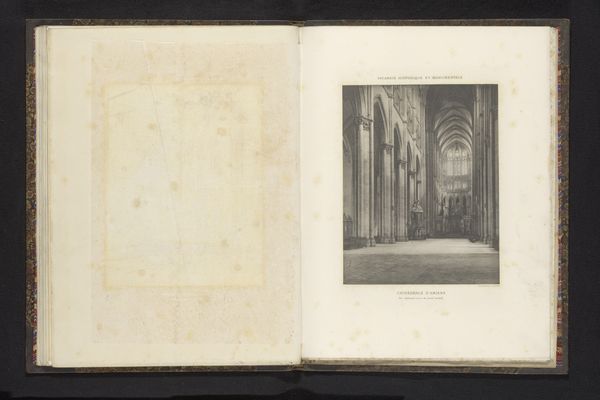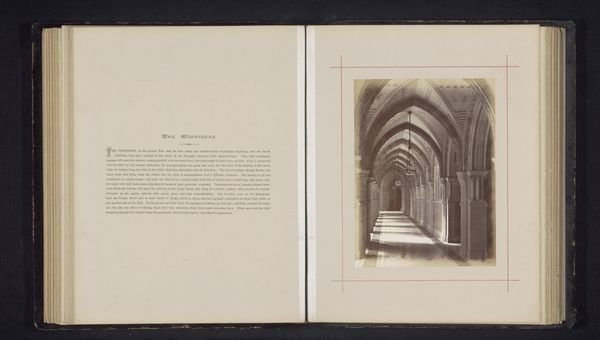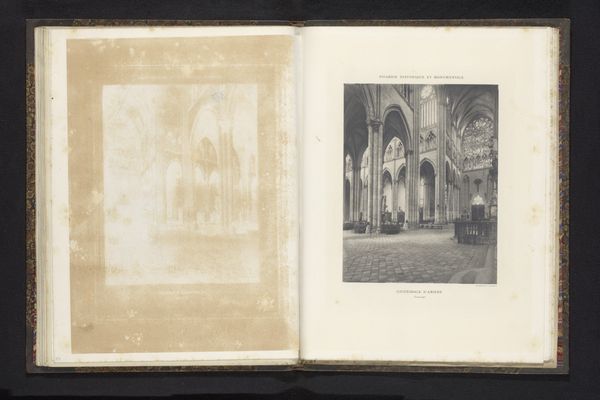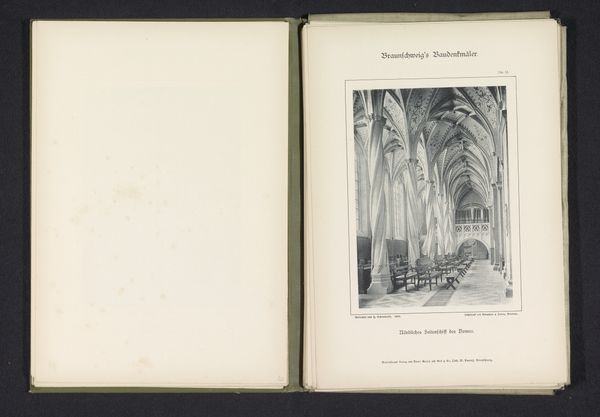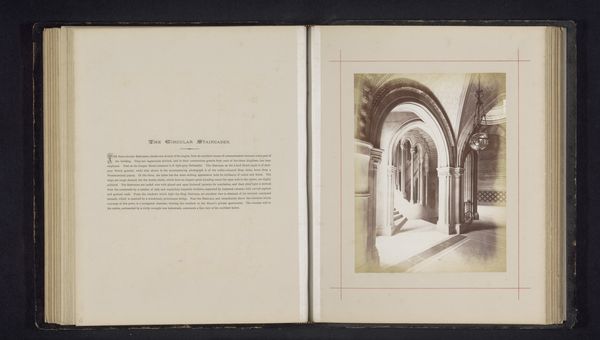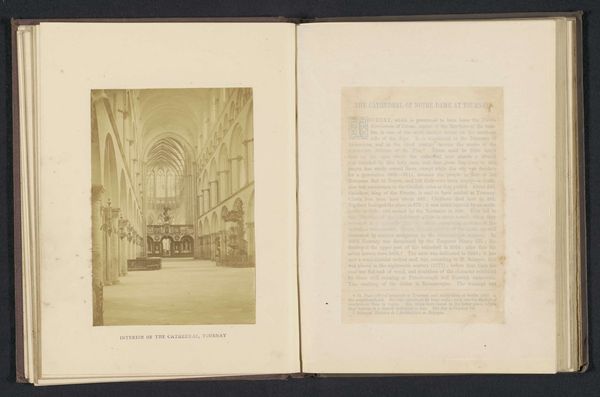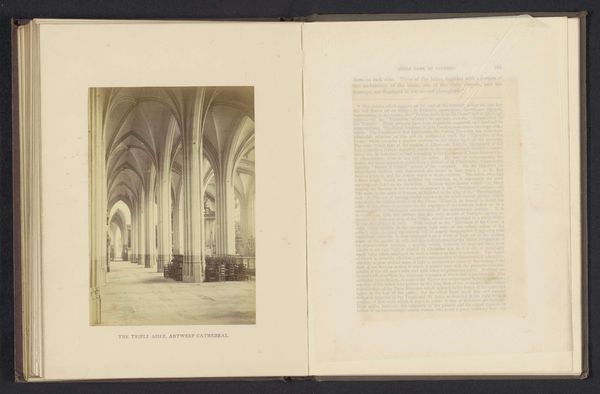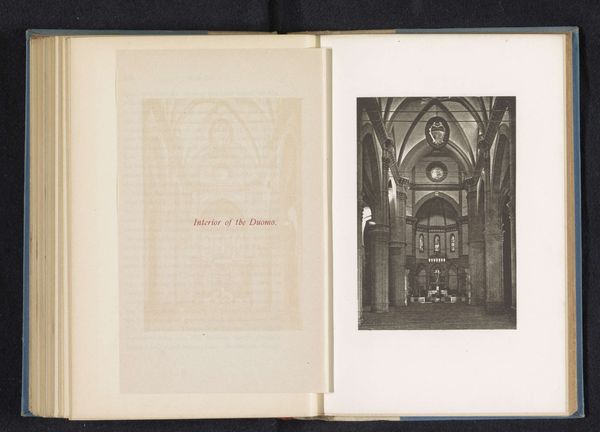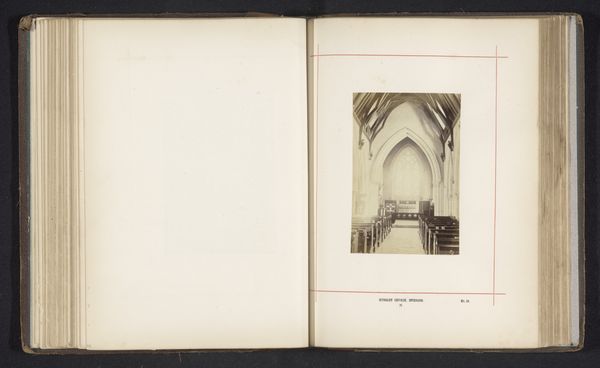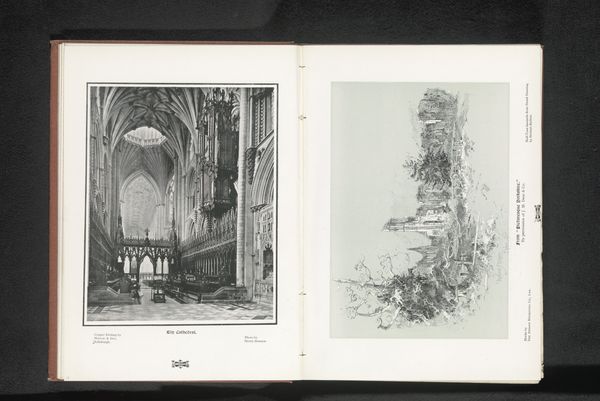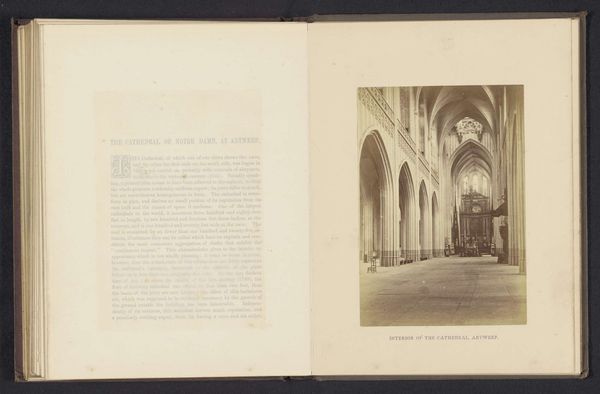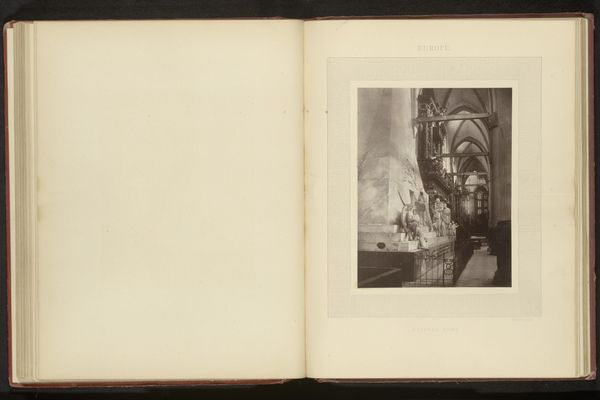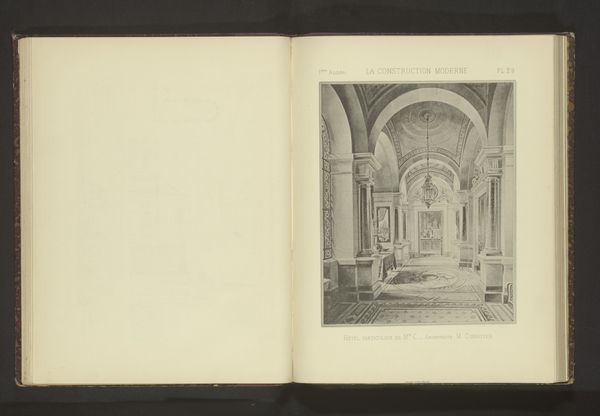
Dimensions: height 219 mm, width 170 mm
Copyright: Rijks Museum: Open Domain
Editor: Here we have an image of "Interieur van de Notre-Dame van Amiens," before 1893. It appears to be an engraving, perhaps from a book? It's striking how the artist captured the immense scale of the cathedral, but the print itself seems rather delicate. What stands out to you about this piece? Curator: Well, considering its existence as a printed image, likely from a book as you said, I immediately think about the means of its production and distribution. Engravings like this made knowledge accessible, democratizing views of these grand, historically significant interiors. Consider the labour involved in its creation – the engraver meticulously transferring architectural detail onto the plate, enabling mass reproduction. How does that compare to the immense effort required to build the cathedral itself? Editor: That’s a great point. I hadn’t really thought about the connection between the production of the image and the cathedral’s construction. Was there a particular market or audience for images like this at the time? Curator: Absolutely. These prints were popular among tourists, scholars, and those who could not physically travel to see such landmarks. This image collapses time and space – experiencing a gothic interior became a commodity. Think about the social and economic forces driving the demand for such imagery. The materials too - the paper, the ink, the metal plate, all commodities within a growing capitalist system. Do you think this affects how we engage with the 'sacred' space depicted? Editor: It's interesting to think about experiencing the spiritual world through commodities. I guess this makes the cathedral more accessible in a way, but perhaps loses some of its aura of religious importance. Curator: Exactly. And consider that even the perspective itself – the carefully constructed vanishing point – is a tool of visual consumption, framing the space for our viewing pleasure. Ultimately, it reminds us that art is never truly separate from its mode of production and the social conditions in which it exists. Editor: I never considered that angle of democratisation via reproducible engraving and printed images of famous places, that is something to think about! Thanks.
Comments
No comments
Be the first to comment and join the conversation on the ultimate creative platform.
